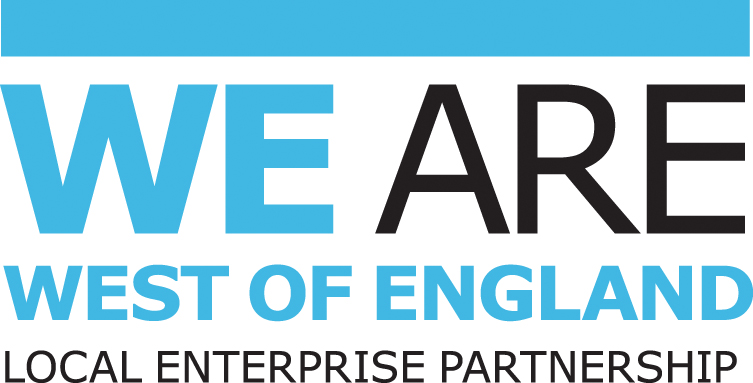27th March, 2025
The world may have changed - but Business Boards are key to local growth.
Now that the Chancellor has delivered her much anticipated Spring Statement, and the Office of Budget responsibility have published their economic for...
Local industrial strategies (LIS), led by Mayoral Combined Authorities or Local Enterprise Partnerships, will promote the coordination of local economic policy and national funding streams and establish new ways of working between national and local government, and the public and private sectors.
Wave 1 - The first eight trailblazer local industrial strategies were announced in November 2017: Greater Manchester, West Midlands (Greater Birmingham & Solihull, Coventry & Warwickshire and Black Country) and the Cambridge-Milton Keynes-Oxford Corridor (Oxfordshire, Cambridgeshire & Peterborough, Buckinghamshire Thames Valley and South East Midlands). These Local Industrial strategies will be published in March 2019.
Wave 2 - The second wave of six local industrial strategies were announced in July 2018: Cheshire & Warrington, Heart of the South West, Leicester & Leicestershire, North East, Tees Valley and West of England. These Local Industrial strategies will be published by March 2020.
Wave 3 - On 3rd December 2018, the government announced the entire country will benefit from Local Industrial strategies with the rest of the LEPs forming the final third wave.
Please see below for the latest updates and developments in each LEP on the progress of their local industrial strategy.

Black Country LEP was one of the trailblazer LEP areas announced in Wave 1 and has been working with government, other West Midlands LEPs (Coventry & Warwickshire LEP and Greater Birmingham & Solihull LEP) and the West Midlands Combined Authority (WMCA) to develop a local industrial strategy (LIS) for the region. Together they have carried out several months of research and evidence gathering to produce the West Midlands Local Industrial Strategy Consultation document. In October 2018, the West Midlands LIS Progress Statement was published. On 11th January 2019 the WMCA Board approved the LIS produced by the WMCA and the three LEPs in the West Midlands. The strategy is now in final drafting with BEIS and CLGU officials. Further updates are available on the WMCA’s website.

The area covered by the Buckinghamshire Thames Valley LEP is home to iconic business brands and locations: Pinewood, Silverstone, Stoke Mandeville and Westcott. Their ambition is to exploit these and our other nationally significant assets to increase the economic output of the county and contribute to tackling Britain’s productivity challenge. Major planned housing growth, new East-West road and rail connections, and significant investment across the Oxford-Cambridge Arc create the conditions for sustained economic growth in Buckinghamshire building on the rich entrepreneurial base and promoting economic and transport links with London. Their Local Industrial Strategy will set out the action the LEP needs to take to realise this ambition. It will also provide the basis for a new relationship with government and neighbouring LEPs. Click here for more information about the LIS for Buckinghamshire.
A consultation draft of the strategy has now been produced and we are seeking the views of businesses, communities and individuals from across Buckinghamshire to help shape our proposal to government in March 2019, with a view to the final strategy being published shortly afterwards. We would like to hear from everybody with an interest in Buckinghamshire’s future growth and prosperity. For further details, consultation questions and downloadable document, please go to: www.buckstvlep.co.uk/our-strategies/local-industrial-strategy/. Responses can be submitted by email to ian@btvlep.co.uk or Lisa.McCance@sharedintelligence.net. The closing date for responses is midnight on 8th March 2019.

Following the Cambridgeshire and Peterborough Independent Economic Review led by Dame Kate Barker, the Mayor and the Business Board (the LEP for this area) are co-developing a Local Industrial Strategy (LIS) that responds to the priority needs of the Cambridge economy – which the Review forecasts could burn out within 15 years if major interventions in infrastructure and housing are not made. Across the wider region there are productivity and social challenges as stark as anywhere in the country, and the LIS is therefore focused on providing targeted support to businesses (through new growth support services and new capital funds), people (through LEP investment in skills aligned with skills powers devolved to the Mayor), and places (through the pioneering of a Market Town Growth Programme to overcome socio-economic challenges in these rural communities).

Coast to Capital LEP was included in the Government's 3rd and final wave of Local Industrial Strategies which, following the publication of its new strategy Gatwick 360˚, will strengthen the area’s economy even further. Coast to Capital’s vision by 2030 is for the towns and cities in the Coast to Capital area to be known around the world as fantastic places to live, to grow and succeed and for the area to become the most dynamic non-city region in England, centred around a highly successful Gatwick Airport. Gatwick 360˚ sets out eight priorities to grow the area’s economy which include specific actions on urban centres, business infrastructure, sustainable growth, skills, innovation, digital networks, transport and identity. Coast to Capital is currently developing its Local Industrial Strategy in partnership with Government, for more information click here. Keep up to date with Coast to Capital’s progress by receiving our newsletter, click here to subscribe.

In Cornwall & the Isles of Scilly (CIoS), their Strategic Economic Plan, Vision 2030, and 10 Opportunities prospectus sets the framework for all their plans and activity and moves them towards a Local Industrial Strategy (LIS), which they’re implementing the first stages of development of at the start of 2019. They also ensure that investments through other funds, such as ESIF, are aligned. As programmes develop and the UK focus shifts towards a Shared Prosperity Fund, the LEP has reflected on its role in driving inclusive growth and ensuring that parts of the economy are not left behind. CIoS are developing an Inclusive Growth Strategy to inform how principles of shared prosperity will underpin the development of our LIS in 2019. They have begun early engagement on SPF and LIS development with partners and stakeholders, the Chamber of Commerce, FSB and Universities and through co-design activity with individuals with lived experience of inclusion issues. CIoS have also commissioned research to underpin the evidence base for LIS, with counterfactual and sector skills focussed activity underway.

Coventry & Warwickshire LEP was one of the trailblazer LEP areas announced in Wave 1 and has been working with government and other West Midlands LEPs (Black Country LEP and Greater Birmingham & Solihull LEP) and West Midlands Combined Authority to develop a local industrial strategy (LIS) for the region. Together they have carried out several months of research and evidence gathering to produce the West Midlands Local Industrial Strategy Consultation document. In October 2018, the West Midlands LIS Progress Statement was published. On 11th January 2019 the WMCA Board approved the LIS produced by the WMCA and the three LEPs in the West Midlands. The strategy is now in final drafting with BEIS and CLGU officials. Further updates are available on the WMCA’s website.

The Cumbria LEP's LIS looks to re-position Cumbria and outline its strategic importance to UK plc based on its strategic location at the centre of Britain; its world class businesses and expertise particularly in nuclear and advanced manufacturing; national importance in defence (nuclear submarine programme) and energy generation including the world’s largest offshore wind farm and the potential for nuclear new build and Advanced Modular Reactors; an exceptional environment including the world-renowned Lake District; and its role as England’s larder for high quality produce. It is a genuinely socio-economic strategy, which operates on the twin platforms of productivity and inclusive growth, placing people and places at the heart of economic growth and making productivity improvement central to its proposed activities. It has been structured around the five drivers of productivity and responds to seven strategic imperatives (working age population, higher level skills, addressing worklessness; increasing enterprise, improving business growth; creating eco-innovation systems; and improving Cumbria’s infrastructure improvements), which are critical to Cumbria’s future economic growth. It has been developed through a seven stage consultation process, which is due to culminate on 4 and 5 March 2019 in final partnership consultation events, which will review the final draft document, prior to its submission to government. A sister Economic Review document has been produced, which provides all of the underpinning evidence base for the LIS. Click here for more information about Cumbria LEP's local industrial strategy. Click here for the latest news on their local industrial strategy.
Cumbria LEP is to hold its third and final round of consultation on the county’s new Local Industrial Strategy. The LEP is working with businesses and the public and voluntary and community sectors to develop the new strategy, which will highlight Cumbria’s strengths and make a compelling case to Government and the private sector for investment up to 2030. The third and final round of consultation events and dates and times are:
Bookings can be made at: https://www.eventbrite.co.uk/o/cumbria-lep-17457022711

Derby Derbyshire Nottingham Nottinghamshire (D2N2) LEP has published an updated Strategic Economic Plan as the first stage of its Local Industrial Strategy. It builds on the strong record of their private sector in creating employment to set new targets to tackle their long-standing productivity deficit so they can remain a competitive business location and deliver long term prosperity. D2N2 still produce too little output for the number of hours worked, have too many people in lower paid jobs and not enough people in higher paid occupations. The D2N2 LEP’s Local Industrial Strategy will build on their extensive existing evidence base to deliver a roadmap towards achieving the vision that ‘by 2030, D2N2 will have a transformed high-value economy, prosperous, healthy and inclusive, and one of the most productive in Europe. The spark in the UK’s growth engine.’ It will tackle the cross-sector productivity gap alongside capitalising on our key innovation and business assets. D2N2 LEP will engage with business, universities, local authorities, government and other partners to develop their LIS and collaborate with other areas to pursue collaborative approaches where they will be more effective. The D2N2 LIS will prioritise those policies and interventions that will have the greatest impact in driving productivity and promoting prosperity in all their communities. It will be a transformative manifesto to shape their local economy in 2030.

The Dorset LEP is focussed on a LIS which builds upon opportunities with the newly created city on the sea of Bournemouth, Christchurch and Poole (a city the same size as Bristol) and the wider city region (rural Dorset) enabled through Local Government Reorganisation. The LEP have just published Dorset Horizon 2038, a 20 year vision for growth. Dorset LEP are working closely with the major business organisations as well as individual companies and are currently focussing on their health sector, addressing the ageing challenge.

Enterprise M3 - their LIS is tightly focused on productivity; inclusive growth; globally competitive specialisms in knowledge, digital, design & innovation; and deep dive into the evidence. Their funding call to entrepreneurs and innovators shows they are turning strategy into action even while LIS is developing. Enterprise M3 is a region that is, globally competitive and has a knowledge, digital and design based economy. Their refreshed Strategic Economic Plan reflects these, and is the foundation for their developing LIS. Their LIS is different from the SEP in that it has a relentless focus on raising productivity and inclusive growth; and a deeper dive into the evidence base. They are acting now on Grand Challenges/Five Foundations. Examples include: launching a Clean Growth Fund; invested in and supported Guildford’s 100% park & ride electric bus fleet (the first in the country); launched start of creating National Centre of excellence for horticultural research at RHS Wisley; actively involved in StoryFutures, a nationally significant R & D venture (hosted and run by Royal Holloway University of London to support createch and creative companies to innovate in the Screen industries); Local Growth Funds, backed by government, have seen the go ahead for our Cyber Security Centre, businesses are flocking to the space focused incubator at BASE on their Enterprise Zone in Whitehill & Bordon.

The Local Industrial Strategy for Gloucestershire produced by GFirst LEP will lead on the important cyber security sector. With GCHQ in their area, the LEP has the opportunity to build on this unique asset. Working closely with our neighbouring LEPs (Worcestershire, Marches and Swindon & Wiltshire) GFirst LEP produced a (Cyber) Science & Innovation Audit in 2018, this will form an important part of the evidence base their our LIS. GFirst LEP have already committed £22 million to create the country’s first dedicated Cyber Business Park in Cheltenham with the ambition to support the growth and development of new cyber security businesses, technology, research and skills. Following on from the recent refresh of their Strategic Economic Plan, their Local Industrial Strategy will pick up the baton and help shape the county's economic priorities through to 2030.

Greater Birmingham & Solihull LEP (GBSLEP) was one of the trailblazer LEP areas announced in Wave 1 and has been working with government and other West Midlands LEPs (Black Country LEP and Coventry & Warwickshire LEP) and West Midlands Combined Authority to develop a local industrial strategy (LIS) for the region. Together they have carried out several months of research and evidence gathering to produce the West Midlands Local Industrial Strategy Consultation document. In October 2018, the West Midlands LIS Progress Statement was published. On 11th January 2019 the WMCA Board approved the LIS produced by the WMCA and the three LEPs in the West Midlands. The strategy is now in final drafting with BEIS and CLGU officials. Further updates are available on the WMCA’s website.

The Greater Lincolnshire LEP is calling for businesses, public sector organisations, education providers, councils and third parties to submit their views on the evidence base used to develop the Local Industrial Strategy. As part of the process, the LEP is seeking views from stakeholders across Greater Lincolnshire. Once implemented next year, the Local Industrial Strategy will set out the LEP’s economic priorities through to 2030 and beyond. Click here for more information about Greater Lincolnshire LEP's local industrial strategy and how to contribute to this consultation process. The closing date for responses is 1st March 2019.

Greater Manchester LEP, as part of the Greater Manchester Combined Authority, was one of the three Wave 1 trailblazer areas to work with the UK Government to develop a modern local industrial strategy. Greater Manchester recently launched a progress statement jointly with HM Government at an event attended by Business Secretary Greg Clark and Greater Manchester’s Deputy Mayor for the Economy, Sir Richard Leese. The Greater Manchester Local Industrial Strategy will outline a set of long-term policy priorities to help guide industrial development and provide a joint plan for good jobs and growth, capitalising on the areas strengths in advanced materials and health innovation. Greater Manchester LEP will now build on the Greater Manchester Strategy and use the results of the consultation and the findings of a separate Greater Manchester Independent Prosperity Review to help develop and inform the final Greater Manchester Local Industrial Strategy. Click here for details of the Greater Manchester local industrial strategy. Click here for the latest news on their Local Industrial Strategy.

The Heart of the South West (HotSW) LEP, covering Devon, Plymouth, Somerset and Torbay, is in the 2nd wave of areas to benefit from working with the Government to develop local industrial strategies (LIS). The LEP is working with its local partners to develop the distinctive opportunities that the area has to offer as investment-ready propositions that have the potential to increase productivity and align with the national industrial strategy at a local level. The HotSW LEP and the HotSW Joint Committee will drive forward the local industrial strategy and oversee its delivery. Click here for details of the Heart of the South West LEP's LIS prospectus. HotSW LIS data sources have been praised by BEIS as being fit for purpose – formally at their national LIS review group and can be viewed here. Click here for details of the Heart of the South West LEP's LIS prospectus. Click here for details of the Heart of the South West LEP's evidence base for its local industrial strategy.
HotSW LEP has now published its LIS progress statement and command paper. Click here for more inforamation.

Hertfordshire LEP Hertfordshire’s Local Industrial Strategy is being co-designed by Government and driven by academic and business innovation and is a ‘collective proposition for investment’. At its sold out State of the Economy conference at the end of 2018, Hertfordshire LEP presented its latest evidence base and emerging LIS priorities underpinned by the five foundations of productivity. This kick-started a Hertfordshire-wide conversation with businesses, academia, not for profit and public sector organisations on how to grow the economy, drive up productivity and embrace new technologies to support innovation. As part of this stakeholder engagement, a comprehensive business survey is being conducted to build on existing Hertfordshire economic analysis and the link to business growth, turnover and productivity. Roundtable forums and place-based sector forums will encourage a deeper dive into some of its competitive strengths, such as an emerging cell and gene therapy cluster of international significance in Stevenage which could become a UK testbed for convergence. This video shows Hertfordshire’s strengths across the five foundations of productivity. Click here for the latest update on the LEPs LIS developments.

The Humber LEP was included in the government's third and final wave of local industrial strategies, but had their final agreement date accelerated from March 2020 to September 2019 by the Government in June this year.
The LEP released its prospectus on June 5th, in conjunction with its Annual Business Summit. The LEP has built its strategy around its commitment to making the Humber into a net zero carbon industrial economy by 2040 – a whole decade earlier than the national target set by the Government in June.
The Humber Industrial Strategy focuses on accelerating clean growth in the region, while developing the Humber Ports and manufacturing clusters.

Leeds City Region Enterprise Partnership and York, North Yorkshire & East Riding LEP are working to develop a Local Industrial Strategy for a proposed new LEP geography covering West and North Yorkshire covering city, rural, and coastal issues. Their approach will focus on bold steps aimed at driving inclusive growth, boosting productivity and improving living standards for a post-2030 economy. The Local Industrial Strategy is being developed jointly by Leeds City Region and York, North Yorkshire and East Riding LEPs, and will build on our collective strengths and range of specialisms. Their Local Industrial Strategy will be underpinned by robust evidence drawing out relative strengths and weaknesses, with an emphasis on productivity. A core Economic Assessment will help determine the priorities for the region, backed-up by in-depth exploration of areas including Clean Growth, Innovation Ecosystems, Health Tech and Supply Chain analysis. They are working in partnership with stakeholders across the region including putting out a call for evidence to ensure the Local Industrial Strategy incorporates the most up-to-date intelligence.

Leicester & Leicestershire LEP (LLEP) produced a Local Industrial Strategy Prospectus document in July 2018 after consulting with over 150 local businesses and this has now been developed in to a video. The prospectus was used to inform Government of Leicester and Leicestershire’s strengths and aspirations. On 6th December 2018, LLEP opened a Call for Evidence and is seeking the views of local stakeholders who are being asked to submit information which they think should be included within the evidence base and should be taken into consideration during the preparation of the LIS emerging priorities. The Call for Evidence closed on 31st January 2019. Click here for more information about LLEP's local industrial strategy.

The local industrial strategy for London will focus on the challenge of achieving inclusive productivity growth in the capital, responding to both London’s strong aggregate productivity performance and its pressing distributional issues. London’s LIS will pursue three major strands of work under this heading. The first, ensuring access to good work in all London communities, will focus heavily on skills, employability and the quality of work. The second, supporting inclusive innovation in London, will focus on further developing London’s innovation strengths, while enabling more of London’s economy to share in the productivity-enhancing benefits of innovation. The final strand, local economies and place, will look at the barriers to growth experienced across London’s diverse geography, as well as considering how London’s contribution to the Wider South East and UK economies can be leveraged.

New Anglia LEP. Norfolk and Suffolk have global strengths in sectors critical to achieve national growth and productivity and the Industrial Strategy provides the opportunity to scale up our contribution to UK PLC. The Local Industrial Strategy is the next stage in the evolution and implementation of the Norfolk and Suffolk Economic Strategy – our blue print for inclusive growth and productivity. It will build on the Economic Strategy but be a deeper and more focused piece of work, looking in more detail at Norfolk and Suffolk’s competitive area of strength - Clean Energy, Agri-food and ICT. Starting from a strong position we are evolving our existing evidence base which will support the development of game changer interventions and aim to publish a Local Industrial Strategy in Autumn 2019. Click here for more information.

The North East LEP area includes the 7 Local Authority areas within Tyne and Wear, County Durham and Northumberland. Two Combined Authorities cover this area, the new North of Tyne Mayoral Authority and the North East Combined Authority. The North East LEP is leading a process working closely with Government, the two Combined Authorities and economic partners to deliver the North East Local Industrial Strategy over the first half of 2019. This is building on a strong evidence base represented by the annual Our Economy report and the priorities set out in the North East Strategic Economic Plan. As a first step in developing the North East LIS, the Strategic Economic Plan has been updated over the last 6 months. An updated version is to be published on 14th February 2019.

The Oxfordshire LEP local industrial strategy (LIS) will build on the current Oxfordshire Strategic Economic Plan (SEP) and provides a framework to guide Government, public and private sector investment decisions - including the UK Shared Prosperity Fund, Sector Deals, Industrial Strategy Challenge Funding and other financing tools – to be used to deliver a strategy. Click here for more information about the Oxfordshire LEP local industrial strategy. Click here to see how Oxfordshire's tranformative technologies are driving its LIS. Click to here to read how Nigel Tipple, OxLEP CEO, sees the strengths of their LIS.

South East Midlands LEP (SEMLEP) was one of the three trailblazer LEP areas in Wave 1 and is part of the Oxford-Cambridge Arc. The area was chosen because of the potential to drive wider regional growth, focusing on clusters of expertise and centres of economic activity. The SEMLEP local industrial strategy (LIS) evidence base and the development of evidence-linked policy responses is regarded by BEIS as best practice for the LEP Network. SEMLEP has engaged with over 20 different stakeholder groups and is currently consulting widely on a full draft of the strategy. Positioning the South East Midlands as the Connected Core of the Oxford-Cambridge Arc, the LIS identifies key sector strengths and world-class assets in next-generation vehicles including CAV infrastructure and powertrain technical testing, in digital technologies and software development, engineering and advanced logistics, agri-tech and food and drink manufacturing. By connecting these innovative research and business clusters with the area’s highly skilled workforce and relative land affordability, the SEMLEP economic area is highlighted as the place where much of the growth opportunity for the Oxford-Cambridge Arc will be delivered. A two-page overview of the LIS emerging policy interventions can be downloaded here. Click here for more detailed information.

Thames Valley Berkshire (TVB) LEP has formed a BLIS Task & Finish Group (TAFG) to ensure that the development of the BLIS accords to local authority expectations and timelines. It has procured the support of SQW and in July 2018 established a BLIS Productivity Commission. SQW has been reviewing evidence and data in relation to the performance of the Berkshire economy on key metrics relating to productivity, and the links between the growth in “advanced sectors” and “non-traded services”. The LEP Executive Board and TAFG met in December 2018 and agreed the overall framework and five priorities that define the BLIS, i.e. its “big picture shape”. The Commission will meet again on 29th January to test its thinking and conclusions against this framework, along with up to five HMG officials (for the purposes of co-design). Click here for the latest news on Thames Valley Berkshire's Local Industrial Strategy.

Work is taking place in the Tees Valley to develop a locally agreed draft of the Local Industrial Strategy (LIS) by May 2019, with a view to achieving final sign-off with Government in September 2019. Current focus is on implementing the agreed project plan, working with local stakeholders and Government officials. Meetings have taken place with the LEP Board and industry representatives to review key messages from the existing evidence base, and identify data gaps / further requirements for research. An engagement plan has been developed and 8 sector challenge sessions are taking place in January 2019. These will check that the baseline analysis carried out to date reflects local views of the sector and area’s economy; identify the factors underpinning the distinctiveness of the sector; check that all the opportunities and constraints to delivering productivity growth are identified; discuss how opportunities can be unlocked and constraints overcome; and agree which key interventions should be prioritised in the strategy.

The West of England is one of the country’s economic success stories. Their economic growth has outstripped national growth over the past 18 years. They are home to aerospace, advanced manufacturing, creative, robotics and finance. They are developing a Local Industrial Strategy that is ambitious and builds on the many opportunities in our region, including our global sectors and highly skilled workforce. Emerging policy conclusions from our evidence base highlight the importance of a ‘City:Lab’ – a real world testing facility that helps their innovators to develop and commercialise their products, and the acceleration of AI and robotics to support our Ageing Society to live well. Click here for more information and to view a video on their progress.

York, North Yorkshire & East Riding LEP and Leeds City Region Enterprise Partnership are working to develop a Local Industrial Strategy for a proposed new LEP geography covering West and North Yorkshire covering city, rural, and coastal issues. Their approach will focus on bold steps aimed at driving inclusive growth, boosting productivity and improving living standards for a post-2030 economy. The Local Industrial Strategy is being developed jointly by Leeds City Region and York, North Yorkshire and East Riding LEPs, and will build on our collective strengths and range of specialisms. Their Local Industrial Strategy will be underpinned by robust evidence drawing out relative strengths and weaknesses, with an emphasis on productivity. A core Economic Assessment will help determine the priorities for the region, backed-up by in-depth exploration of areas including Clean Growth, Innovation Ecosystems, Health Tech and Supply Chain analysis. They are working in partnership with stakeholders across the region including putting out a call for evidence to ensure the Local Industrial Strategy incorporates the most up-to-date intelligence.